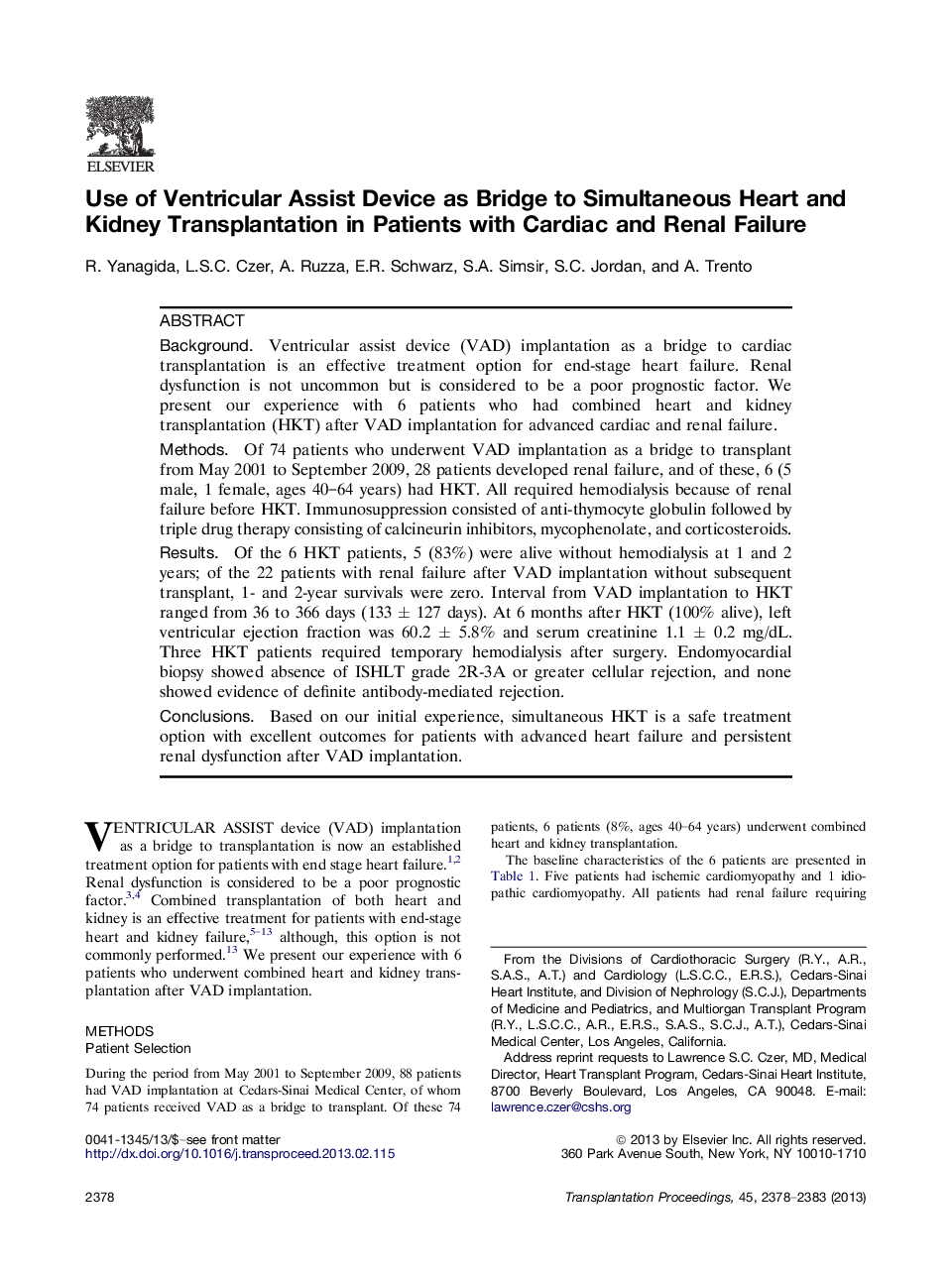| Article ID | Journal | Published Year | Pages | File Type |
|---|---|---|---|---|
| 4255685 | Transplantation Proceedings | 2013 | 6 Pages |
BackgroundVentricular assist device (VAD) implantation as a bridge to cardiac transplantation is an effective treatment option for end-stage heart failure. Renal dysfunction is not uncommon but is considered to be a poor prognostic factor. We present our experience with 6 patients who had combined heart and kidney transplantation (HKT) after VAD implantation for advanced cardiac and renal failure.MethodsOf 74 patients who underwent VAD implantation as a bridge to transplant from May 2001 to September 2009, 28 patients developed renal failure, and of these, 6 (5 male, 1 female, ages 40–64 years) had HKT. All required hemodialysis because of renal failure before HKT. Immunosuppression consisted of anti-thymocyte globulin followed by triple drug therapy consisting of calcineurin inhibitors, mycophenolate, and corticosteroids.ResultsOf the 6 HKT patients, 5 (83%) were alive without hemodialysis at 1 and 2 years; of the 22 patients with renal failure after VAD implantation without subsequent transplant, 1- and 2-year survivals were zero. Interval from VAD implantation to HKT ranged from 36 to 366 days (133 ± 127 days). At 6 months after HKT (100% alive), left ventricular ejection fraction was 60.2 ± 5.8% and serum creatinine 1.1 ± 0.2 mg/dL. Three HKT patients required temporary hemodialysis after surgery. Endomyocardial biopsy showed absence of ISHLT grade 2R-3A or greater cellular rejection, and none showed evidence of definite antibody-mediated rejection.ConclusionsBased on our initial experience, simultaneous HKT is a safe treatment option with excellent outcomes for patients with advanced heart failure and persistent renal dysfunction after VAD implantation.
